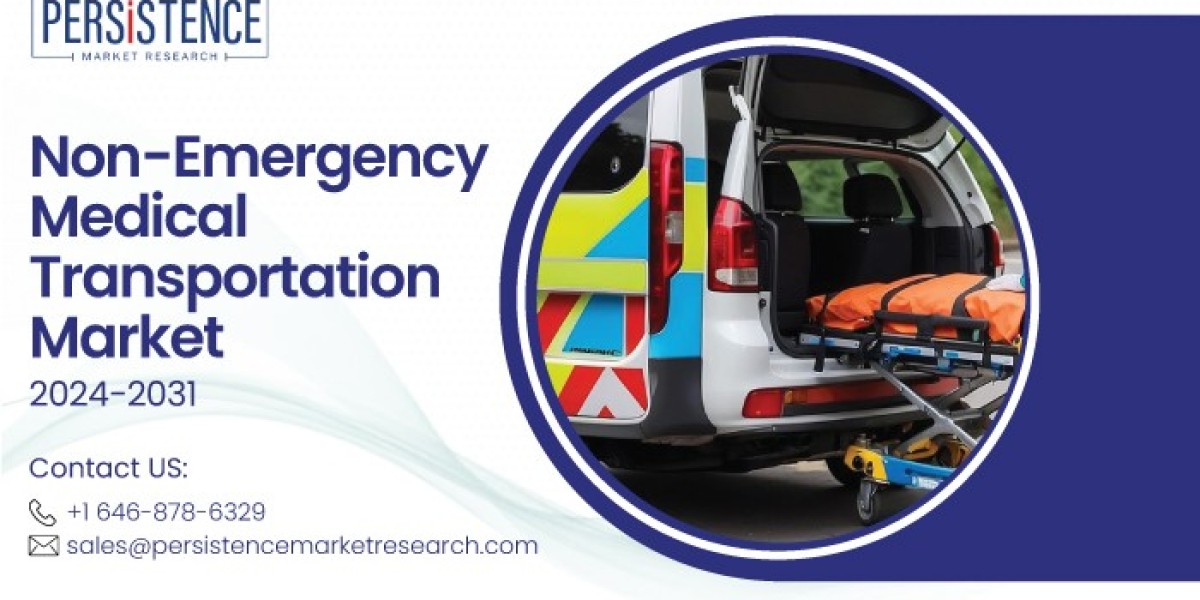For individuals who require transportation to medical appointments but do not need emergency care, Non-Emergency Medical Transport (NEMT) services offer a crucial solution. Whether you're recovering from surgery, have mobility limitations, or need assistance getting to routine doctor visits, NEMT ensures safe and reliable transportation. However, understanding the cost of these services is essential for planning, budgeting, and ensuring you get the right care.
What is Non-Emergency Medical Transport (NEMT)?
Non-Emergency Medical Transport (NEMT) is a service designed to transport patients who need assistance getting to medical appointments or healthcare facilities. Unlike emergency medical services (EMS), NEMT is for patients who are not in immediate danger but require transportation for medical care, such as routine checkups, dialysis, physical therapy, or surgery follow-ups.
NEMT services accommodate patients with various needs, including those in wheelchairs, requiring stretchers, or needing minimal assistance. These services may be covered by Medicaid, Medicare, or private insurance, depending on eligibility.
Average Cost of Non-Emergency Medical Transport
The cost of NEMT services can vary widely depending on the level of care, distance, location, and specific needs of the patient. Below is an overview of the average costs for different types of non-emergency medical transport:
Ambulatory Transportation (for patients who can walk with minimal assistance):
- Cost Range: $20 to $60 per trip (local trips)
- Ambulatory transport involves basic vehicles (e.g., sedans or vans) for patients who can walk or only need help getting in and out of the vehicle. This is the most affordable option for short trips to local healthcare providers.
Wheelchair Transportation (for patients requiring a wheelchair-accessible vehicle):
- Cost Range: $50 to $150 per trip
- Wheelchair-accessible vehicles are equipped with ramps or lifts to accommodate patients in wheelchairs. The cost increases due to the special equipment required and the assistance provided by drivers.
Stretcher Transportation (for patients who must lie down during the trip):
- Cost Range: $200 to $400 per trip
- Stretcher transport services are more specialized, providing vehicles and medical equipment for patients who cannot sit or stand. These services often require additional staff and medical monitoring during transport, which increases the cost.
Non-Emergency Ambulance (for patients needing medical supervision during transport):
- Cost Range: $500 to $1,200 per trip
- Non-emergency ambulance services are used for patients who need constant medical care during transport but are not in life-threatening situations. This service includes medical personnel, advanced medical equipment, and patient monitoring.
Long-Distance NEMT:
- Cost Range: $3 to $10 per mile (depending on service and level of care)
- For longer trips, many NEMT providers charge per mile, which can significantly increase the cost. For example, a long-distance trip of 100 miles could range from $300 to $1,000, depending on the type of transport required.
Factors Affecting NEMT Costs
Several factors influence the cost of non-emergency medical transportation. Understanding these variables will help you estimate and manage your expenses more effectively.
1. Type of Transport
The level of care required dictates the type of transportation, which directly affects pricing. Ambulatory transport is the most affordable, while stretcher or non-emergency ambulance services are more costly due to the specialized equipment and staff involved.
2. Distance
Distance is a major factor in NEMT pricing, especially for longer trips. Most providers charge a base rate for the first few miles, then apply a per-mile charge. If your medical appointment is in a distant location, expect the cost to increase accordingly.
3. Location
The cost of NEMT services can vary based on geographic location. Urban areas with more transportation providers may have lower costs due to competition, while rural areas might face higher prices because of the limited availability of services and the longer distances required for transportation.
4. Additional Services
Patients with specific needs, such as oxygen tanks, ventilators, or other medical equipment, may require extra assistance during transport. These services can raise the overall cost, as specialized equipment and medical staff may be required to ensure the patient’s safety.
5. Time of Day and Scheduling
The timing of your transport can also impact the cost. Standard business hours (Monday through Friday, 9 a.m. to 5 p.m.) are typically the least expensive times to schedule transportation. However, off-peak times such as evenings, weekends, or holidays may come with added surcharges or fees.
6. Insurance Coverage
Many patients are eligible for NEMT services through Medicaid, Medicare, or private insurance plans. If your insurance covers NEMT services, you may only be responsible for a copayment or, in some cases, no out-of-pocket expenses. However, it's essential to check with your insurance provider to confirm coverage details.
Tips to Manage NEMT Costs
Although NEMT services can be costly, there are several ways to manage expenses and ensure you’re getting the most value for your money:
Check Insurance Coverage: Before scheduling NEMT services, check with your Medicaid, Medicare, or private insurance provider to see if transportation is covered. Some plans fully cover NEMT, while others may require a copayment.
Compare Providers: Costs for NEMT services can vary between providers. Take the time to research different companies in your area, ask for quotes, and compare services to find the most affordable and reliable option.
Schedule in Advance: Booking transportation well in advance can help you avoid higher costs for urgent or last-minute services. Many NEMT providers offer discounts for early booking or recurring trips for patients with ongoing medical needs, such as dialysis or physical therapy.
Look for Discounted Rates: Some providers offer discounted rates for patients who need frequent transportation. If you require regular NEMT services, such as weekly trips to a dialysis center, ask about package deals or discounted rates for recurring trips.
Partner with Healthcare Providers: Many healthcare facilities work closely with NEMT providers and can help you coordinate affordable transportation options. Some hospitals and clinics even have agreements with transportation companies to reduce costs for patients.
Conclusion
The cost of non-emergency medical transportation varies widely based on the type of service, distance, and specific needs of the patient. On average, patients can expect to pay anywhere from $20 to $1,200 for a single trip, depending on the level of care required. However, with proper planning, insurance coverage, and careful research, you can manage NEMT costs effectively and ensure you receive the transportation needed to access vital healthcare services.
By understanding the factors influencing NEMT pricing, you’ll be better prepared to make informed decisions, reduce your expenses, and ensure that transportation is never a barrier to receiving the medical care you need.



